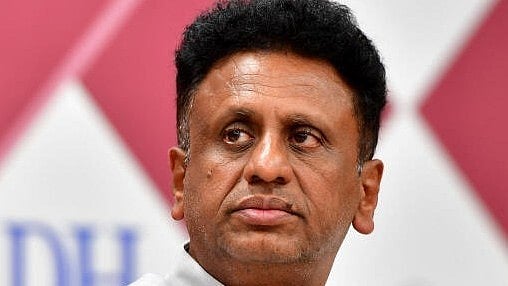
Higher Education Minister Dr M C Sudhakar.
Credit: DH File Photo
When Karnataka’s Higher Education Minister M C Sudhakar admitted in the legislative council that the state is struggling to find qualified candidates for Vice Chancellor posts, it struck a raw nerve in the academic community. For a state that prides itself on being India’s knowledge hub – with an IIT, IIM, and a range of reputed universities – this shortage raises disturbing questions about the governance and future of higher education.
On paper, the eligibility criteria appear straightforward: the Vice Chancellor must be an eminent academic with at least ten years of teaching experience. But behind this simple rule lies a harsh reality. Many accomplished scholars are unwilling to apply. Not because they lack ambition, but because they view the system as skewed.
The perception that extraneous considerations, including caste equations, political patronage, and even allegations of monetary deals, outweigh academic merit has cast a long shadow. There is a general impression that transparency in appointments is at best patchy, at worst absent.
For those qualifying, the job itself can seem deeply unappealing. Universities in Karnataka are plagued by funding shortages, political interference, and chronic vacancies in faculty positions. Even an outstanding scholar risks being reduced to a bureaucrat navigating red tape rather than a leader shaping academic destiny.
It is hardly surprising, then, that many of the state’s brightest minds – people who have international exposure, research credentials, and reputations to protect – would rather focus on their academic careers or accept positions in central institutions. The leadership vacuum should be addressed with imagination.
The University Grants Commission (UGC) has already suggested widening the eligibility criteria to include senior professionals from public administration or industry who have made academic contributions. IIMs, for instance, have shown how involving eminent professionals and industrialists in leadership roles can strengthen institutions without undermining their academic ethos. Karnataka would do well to explore, not reject, such ideas.
The solution is twofold. First, and most critically, the state must restore credibility in the appointment process by making it transparent and merit-driven, insulated from political calculations and external pressures. Second, it must show openness to reimagining leadership in higher education, considering proven talent from wider fields.
If these steps are not taken, Karnataka’s universities risk a slow decline, governed not by the most capable but by the most compliant. For a state that aspires to lead India’s knowledge economy, settling for mediocrity at the top is not merely a missed opportunity; it is an avoidable failure.
